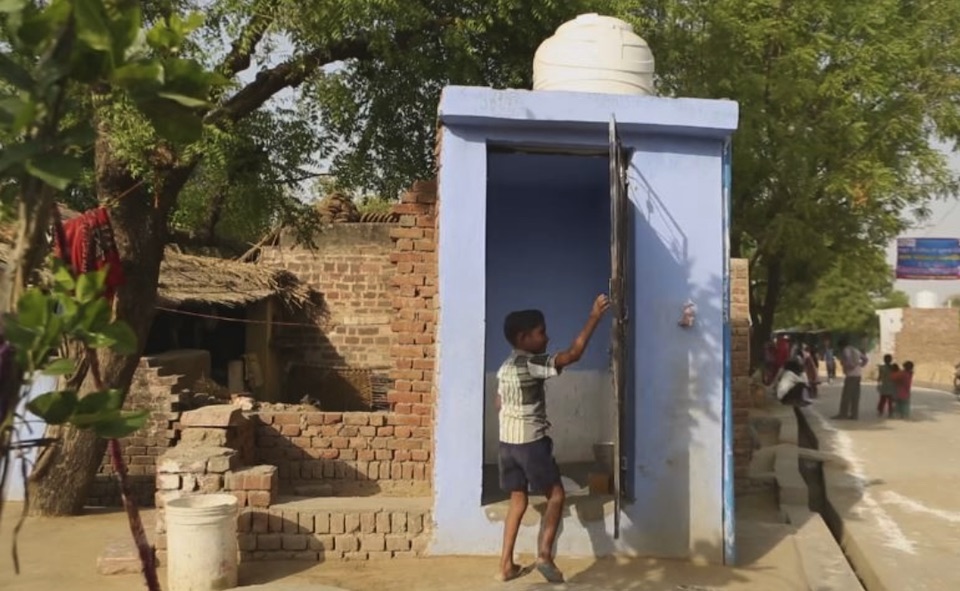Originally published in: Hindustan Times
Authors: Sangita Vyas
Last August, I visited Rajasthan to understand what the Swachh Bharat Mission (SBM), which aims to eliminate open defecation in India by October 2, has done. In the villages I visited, many households had constructed latrines. Some households faced threats to build toilets, and some actually lost their rations, pensions, or NREGA work for several months. In some villages, households that had constructed latrines had “niralo ghar” (extraordinary house) stamped into their ration books. The ration dealer was not supposed to give rations to households that did not have this stamp. But still, many readily admitted that they defecate in the open.
This visit was part of a larger study that my colleagues and I at Research Institute for Compassionate Economics have done in partnership with Accountability Initiative of the Centre for Policy Research. This survey sheds light on what the SBM did and on changes in open defecation from 2014 to 2018. We revisited households that we originally visited in 2014 and asked where over 9,800 people defecate in rural Bihar, Madhya Pradesh, Rajasthan, and Uttar Pradesh.
What we found is that many latrines have been constructed over the past four years, which has led to a faster reduction in open defecation than in the past. Nevertheless, 44% of people over the age of two still defecate in the open in the region. Moreover, coercive and threatening tactics, like those that I saw evidence of in Rajasthan, were used in all of the states to compel people to build and use latrines.
In our survey, we asked whether people were prevented from defecating in the open or harassed while doing so, whether people were fined or threatened with fines if they did not comply with the SBM, and whether people lost or were threatened with the loss of public benefits (such as food rations) if they did not comply with the SBM. Of course, these forms of coercion vary in how ethical or unethical they are, and whether or not they can be lawfully used. I believe they are nevertheless important to consider when evaluating what the SBM has done.
What we found is that one in every two households told us that they were aware of some form of coercion for not building or using a latrine, and one in four households were aware of government benefits being withdrawn. Dalits and Adivasis were more likely than other groups to report their own household experienced coercion to build or use a latrine.
These statistics show that these tactics were not just one-off events used occasionally in some places. They were commonly used tools in the implementation of the SBM across the states we visited.
Sustainably reducing open defecation in rural India would reduce the number of babies who die and would improve the physical and cognitive development of surviving children. Subsidising latrine construction also benefits people who would like to use a latrine but don’t have the means to construct one themselves — like the elderly and disabled.
But, these gains have clearly come at a cost to certain fundamental rights through the widespread use of coercion. There are other costs of the SBM which also deserve attention. In some places, the SBM has created another avenue for reinforcing caste divisions. Moreover, many households still believe that emptying decomposed sludge from a pit is impure work. So when the pits of these new latrines fill up, what will be the implications for Dalits who have been forced to do this kind of work in the past? There are opportunity costs too. When officials were working on the SBM they were not serving citizens in other ways. There are also costs associated with not being able to trust official claims.
Open defecation is not close to being eliminated in rural India. Come October 2, India will still need a sanitation policy that promotes the use of latrines. What should the next sanitation policy look like? A start to answering that question requires evaluating what the SBM has done.
It is true that the reduction in open defecation has accelerated under the SBM. Based on this fact, some may argue that the SBM has been a success. But such a judgment is hasty, and ignores many of the other outcomes of the programme. The tactics employed by the SBM present important trade-offs that require public debate. Evaluating these trade-offs will at the very least require understanding how many people have been hurt because of the SBM, and how much it has accelerated the decline in open defecation. Reducing open defecation in rural India is an important human development goal, but at what cost?

